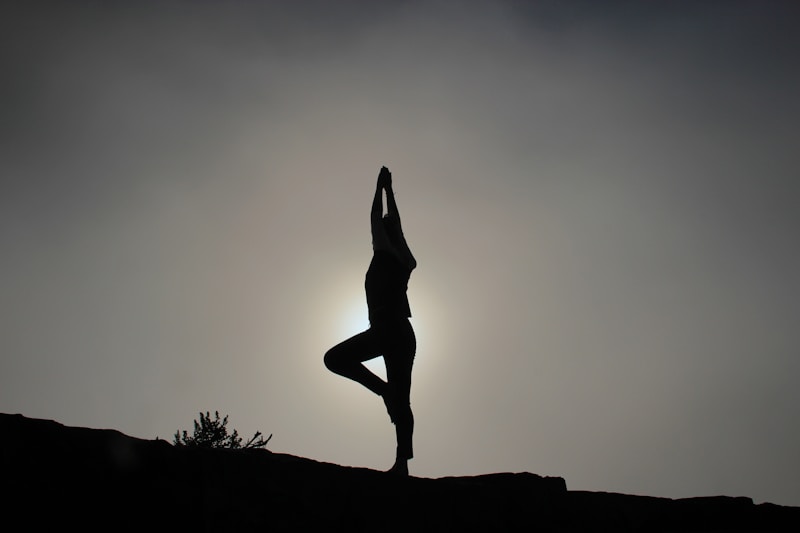Back pain is the leading cause of disability worldwide. At any time 9.4% of people on the planet are suffering with back pain.
The Size of the Problem
The majority of us will suffer back pain at some time in our lives. Most back pain will resolve within six weeks with self-care. The sorts of things we can do to help ourselves are…
- Over-the-counter painkillers — Such as paracetamol and ibuprofen.
- Active rest — Keep moving and stay at work if you can.
- Gradual return to activity — Slowly build up your activity levels as the pain resolves until you are back to doing everything you would normally do.
Most people with back pain can treat themselves, but if the pain is severe or not getting better with self-management then a trip to your GP may be needed. Your doctor can prescribe stronger painkillers and may refer you for some treatment. Physiotherapists, osteopaths and chiropractors are all qualified to treat back pain and have a range of treatments at their disposal (exercises, manual treatments, acupuncture, rehabilitation).
With self-care or treatment from a healthcare professional 80% of back pain will resolve fully. But what about the other 20% unlucky enough to keep on suffering from back pain?
Why Does Back Pain Hang Around?
When pain starts, the body tries to protect itself from further damage by tightening muscles (a muscle spasm) and reducing the amount of movement it does. In the case of low back pain the paraspinal muscles go into spasm and the abdominal muscles, specifically transversus abdominis, become deactivated. The major role of transverses abdominis is to support the back through increasing intra-abdominal pressure and by tensioning the fascia around the paraspinal muscles — so when it deactivates it makes the whole spinal system more vulnerable.
This is not really a problem if the pain goes away quickly, but if the problem lingers this deactivation is something that needs to be addressed before the pain will go away. In addition, other muscles become deconditioned from lack of activity and imbalances can develop with some muscles overpowering others resulting in poor movement patterns. With unhelpful movement patterns reinforcing the deactivation in a vicious circle, back pain can become a lasting problem for some unfortunate people.
Some sources also believe that the thoracic lumbar fascia itself could be a cause of back pain either through inflammation or immobility. Then there are the usual culprits of discs, ligaments and nerve roots that can cause back pain.
It used to be believed that rest was the way to resolve back pain and people took to their beds for weeks on end. By the time I was training as physiotherapist (in the 80’s) we knew that movement was good but had no idea what the best sort of movement was. Over the years we have prescribed general movement; movements based on flexion of the spine (curling up in a ball) and repetitive extension work (arching of the spine). We have embraced gym balls and pilates to activate our transversus abdominis and advocated stretching the muscles that tend to be short in back pain sufferers, such as hamstrings, quads, piriformis and glutes.
Yoga for Loosening Your Lumbar Spine
More recently there has been a growing body of evidence to show that the physical practice of yoga (āsāna) can is a safe, beneficial and cost-effective way of managing low back pain. It seems that the combination of stretching, strengthening and mindfulness that comes with yoga is just what the doctor ordered…
- The British Journal of Sports Medicine recognises that, not only does yoga decrease pain and disability, it has the added advantage of being delivered in the community rather than a hospital setting. This reduces the burden on NHS resources, demedicalises treatment and facilitates development of an ongoing practice for long term benefit.
- Some people get pain referred into their buttock or leg as well as their back (called sciatica). This is often more disabling than simple back pain and can be hard to treat if the leg pain has been there for a long time. The good news it that new research shows that yoga is safe and beneficial in sciatica too.
- Another lovely piece of science has shown that those with the poorest physical health when they took up yoga showed the most improvement. This tells me that no one is ever too unfit for their back pain to benefit from yoga.
- There is also work showing that the core muscles we think are working in yoga really are activated. In Down Dog, High Plank and Low Cobra some of our abdominals are activated (specifically external obliques), Chair Pose and Warrior 1 engage the glutes, and Chair or Half Chair also activate the paraspinals.
Pretty convincing evidence, huh?
Where to Start?
If you’ve had back pain for a while it’s really daunting to consider doing an activity that is often seen as the domain of petite, young, flexible females who contort themselves into awe-inspiring poses. But do not fear — no matter how unfit, inflexible and deconditioned you are there is a type of yoga out there to suit you. When anyone wants to take up yoga to help them recover from an injury or illness, I always recommend a few things…
- Start with a qualified teacher who will be able to modify yoga poses to suit their particular problem. Some yoga teachers will advertise that they are yoga therapists or that their classes are restorative or gentle. These will be ideal for anyone suffering with back pain. The more energetic styles like Ashtanga Vinyasa, Bikram, dynamic or power yoga are likely to be too fast and forceful when you are starting your yoga journey.
- Always listen to your body – do not push into pain or hold a stretch in a way that is increasing your discomfort. Start really gently – it is better to feel like you are not doing much and feel OK the next day than push hard and suffer for it!
- Be patient. You and your teacher will learn what works for you and your body as your practice develops. As your muscles & fascia lengthen; your muscles activate and your pain starts to subside you will be able to work into more advanced poses if you want to but that will take time.
Yoga is a pathway that brings great rewards in terms of fitness, function and quality of life for back pain sufferers. I can’t recommend it enough and would so love to hear if you are already feeling the benefits of a yoga practice.













